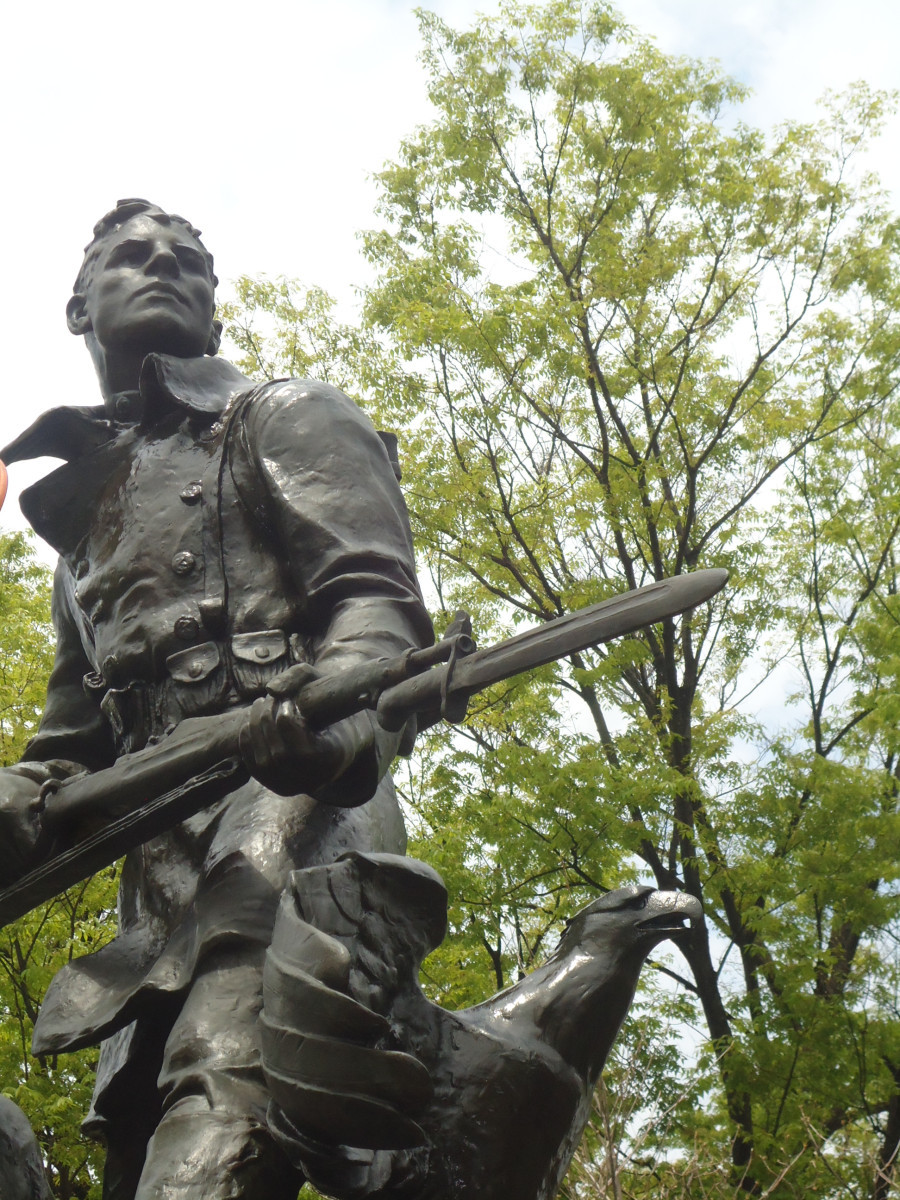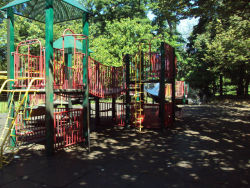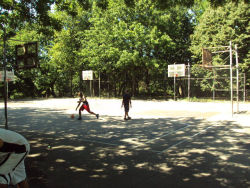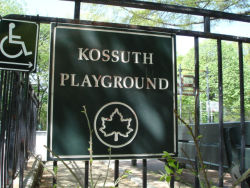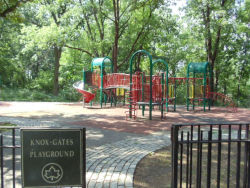Mosholu Parkway
View all monuments in NYC Parks, as well as temporary public art installations on our NYC Public Art Map and Guide.
Bronx Victory Memorial
| Artist: | Jerome Connor |
| Dedicated: | November 11, 1925 |
| Location: | Mosholu Parkway & Marion Avenue |
Artwork History
This striking bronze figural group honors the local servicemen who paid the supreme sacrifice during World War I (1914-1918). At the end of the War in 1918, local citizens formed the Bronx Victory Memorial Association. They commissioned Irish-born, self-taught artist Jerome Connor (1875-1943) to create the war memorial. His conception depicts a fallen soldier, protected by a comrade who stands vigilant with bayonet in hand. At his feet, an eagle with wings spread symbolizes the victorious call to arms. The sculpture is set upon a circular pedestal of Rockport and Deer Isle pink granite designed by architect Arthur George Waldreaon and is framed by a bed of trees and floral beds.
World War I began after the assassination of Archduke Francis Ferdinand in Sarajevo on June 28, 1914. War ensued, pitting France, Great Britain, and Russia against Germany, Austria-Hungary, and the Ottoman Empire. The United States initially declared its neutrality, but this decision soon changed when Germany announced in February 1917 that it would no longer respect the neutrality of the seas, instructing U-boat commanders to attack any Allied vessel. President Woodrow Wilson (1856-1924) protested this action and within three weeks the U.S. formally declared war on Germany and its allies.
The sheer numbers of fresh U.S. troops finally tipped the balance of favor toward the Allied forces, and the long stalemate was broken. German forces collapsed under the weight of war and of political revolt in their home country, and sought out an end to the conflict. An armistice was signed on the eleventh hour of the eleventh day of the eleventh month of 1918.
The most striking feature of World War I was the unprecedented human devastation it caused. It is estimated that of the 61.5 million soldiers who fought in the war, from the European trenches to the Far East, 8.5 million were killed, 7 million were permanently injured or maimed, and an additional 12.5 suffered recoverable injuries. Because of its late entry into the war the United States suffered among the fewest losses, at approximately 116,000.
Memorial ceremonies in honor of the war dead were held throughout the participating countries on the first anniversary of the war’s end, November 11, 1919. President Wilson proclaimed this day “Armistice Day.” Following the lead of France and Great Britain, the United States laid an unknown soldier to rest in Washington, D.C. on November 11, 1921. In the following years, 27 states adopted laws declaring November 11 a legal holiday, and the day was officially named “Armistice Day” on June 4, 1926. Following the United States’ encounters with warfare in World War II (1939-1945) and Korea (1950-1953), on June 1, 1954, President Dwight D. Eisenhower (1890-1969) signed a bill renaming Armistice Day “Veterans Day.”
Seven years after the Armistice, this sculpture was unveiled before thousands of spectators on November 11, 1925. In 1989 it was conserved through the Municipal Art Society’s Adopt-A-Monument Program.
Artwork Details
| Description: | Group of two figures (life size) with eagle with integral plinth, on pedestal |
| Architect: | A.S. Waldreaon |
| Materials: | Bronze, Rockport and Deer Isle granite |
| Dimensions: | Group H: 7'; Pedestal H: 6'6" |
| Donor: | Bronx Victory Memorial Association |
| Cast: | 1925 |
Inscription
Pedestal: ERECTED BY THE CITIZENS / AND PATRIOTIC FRIENDS / TO THE MEMORY OF / THOSE OF THE BRONX / WHO SERVED AND TO THOSE / WHO FOUGHT AND DIED / IN THE WORLD WAR / THAT THE LIBERTY AND / THE IDEALS OF OUR / COUNTRY MIGHT ENDURE / MCMXXV /Integral base: EAGLE BRONZE WORKS, INC. FOR J.W. FISK IRON WORKS, NEW YORK /
Please note, the NAME field includes a primary designation as well as alternate namingsoften in common or popular usage. The DEDICATED field refers to the most recent dedication, most often, butnot necessarily the original dedication date. If the monument did not have a formal dedication, the yearlisted reflects the date of installation.
For more information, please contact Art & Antiquities at (212) 360-8163.
Check out your park's Vital Signs
Clean & Safe
Green & Resilient
Empowered & Engaged Users
Share your feedback or learn more about how this park is part of a
Vital Park System
